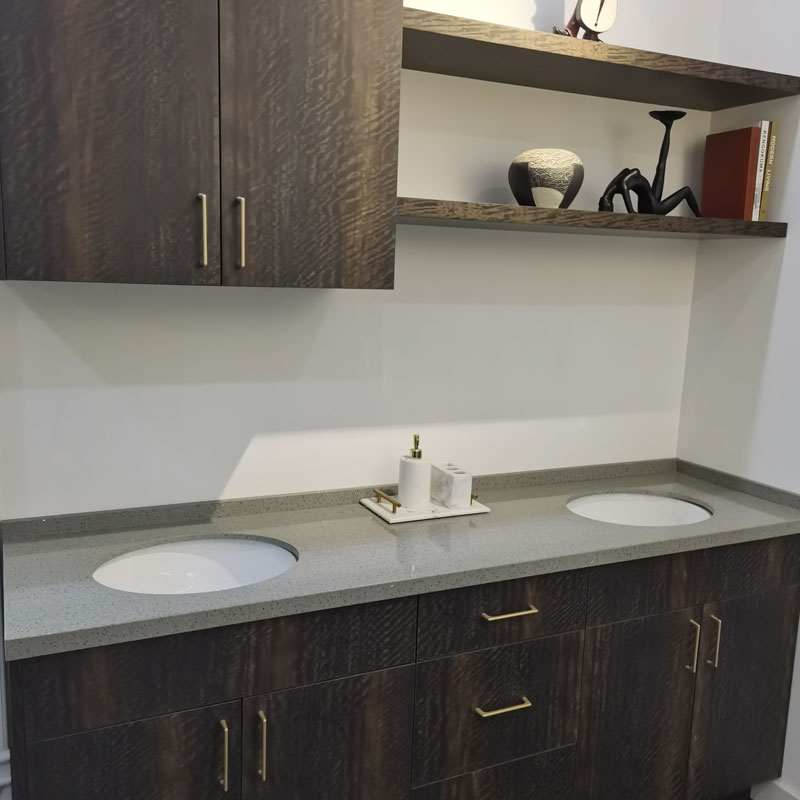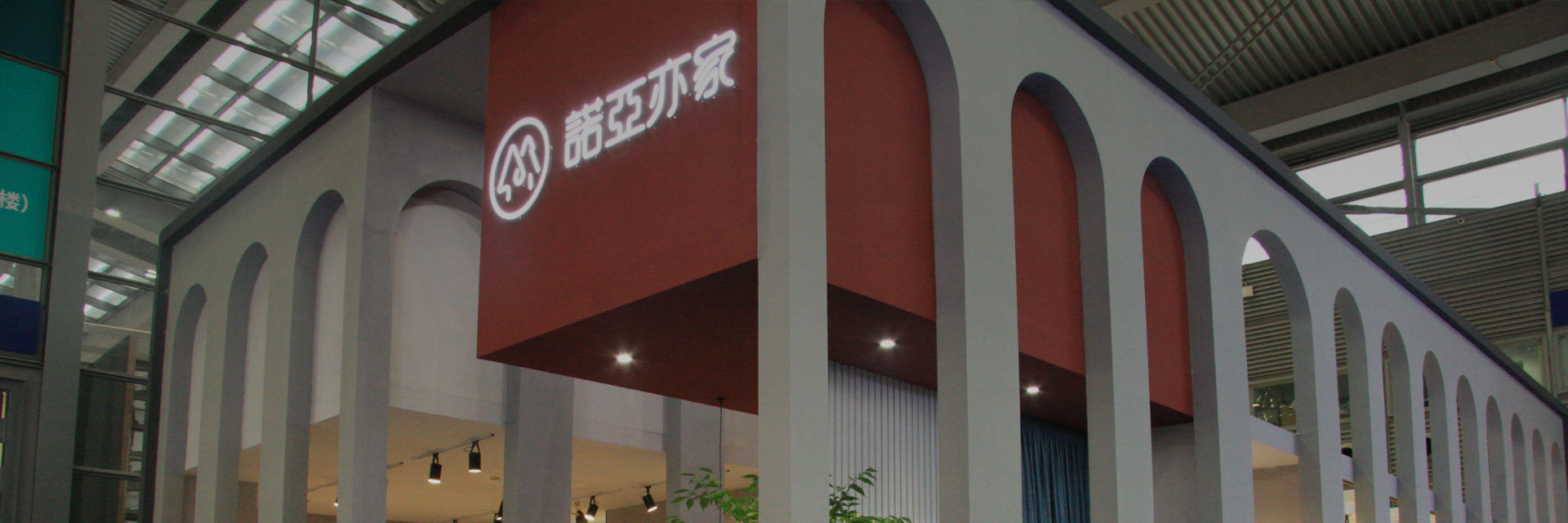Why Is a Modern Bathroom Vanity the Key to Style, Functionality, and Future-Ready Design?
A bathroom vanity is far more than a simple fixture—it serves as the focal point of bathroom design, blending storage, style, and function into a unified centerpiece. In modern homes, vanities define the entire mood of a bathroom, balancing aesthetics and practicality in a space where both comfort and efficiency matter. A well-designed vanity not only hides plumbing and provides storage but also reflects the homeowner’s taste through its design, materials, and craftsmanship.

Over the past decade, bathroom vanities have evolved from standard cabinetry to custom-built design elements that integrate lighting, smart features, and sustainable materials. Whether for compact urban apartments or luxury residences, choosing the right vanity means optimizing space and achieving visual harmony.
Today’s consumers seek clean lines, durable finishes, and ergonomic layouts. Vanities are no longer just storage units—they are well-engineered furniture pieces that improve everyday living. By understanding how each component contributes to performance, one can appreciate the value behind modern vanity engineering.
How to Choose the Right Bathroom Vanity: Understanding Materials, Sizes, and Features
Selecting the perfect vanity involves evaluating key parameters that directly impact both design and usability. Below is a breakdown of essential product parameters that determine quality and suitability:
|
Feature
|
Description
|
Why It Matters
|
|
Material
|
Solid wood, MDF, plywood, or particle board
|
Determines durability, water resistance, and visual appeal
|
|
Countertop
|
Marble, quartz, ceramic, glass, or resin
|
Affects aesthetics and ease of maintenance
|
|
Sink Type
|
Undermount, vessel, or integrated
|
Defines usability and space efficiency
|
|
Finish
|
Matte, glossy, painted, or woodgrain
|
Impacts visual harmony and cleaning convenience
|
|
Storage
|
Drawers, shelves, hidden compartments
|
Enhances organization and accessibility
|
|
Faucet Mount
|
Single-hole, widespread, or wall-mounted
|
Influences style and installation complexity
|
|
Lighting Options
|
LED strips, mirror lighting, or ambient
|
Improves functionality and modern appearance
|
|
Size Range
|
24" to 72"
|
Tailors fit to space, from compact to double-sink setups
|
|
Color Palette
|
White, gray, walnut, black, oak
|
Aligns with contemporary interior trends
|
|
Hardware
|
Stainless steel, brass, brushed nickel
|
Adds tactile luxury and long-term performance
|
A high-quality bathroom vanity must achieve a balance between design coherence and daily usability. For example, a solid wood cabinet with a quartz countertop ensures resistance to humidity and surface damage—essential for humid bathroom environments. Meanwhile, minimalist handleless drawers enhance modern aesthetics while maximizing space efficiency.
Furthermore, the inclusion of soft-close hinges, integrated lighting, and waterproof finishes demonstrates advanced craftsmanship. These features are not just add-ons; they represent the evolution of vanities into long-term lifestyle investments.
Why Bathroom Vanities Are Evolving: Trends Shaping the Future of Bathroom Design
The modern bathroom is no longer just a utilitarian space—it has become a personal retreat, a place of relaxation and daily renewal. This shift has redefined how bathroom vanities are designed and manufactured. Three major trends are shaping the next generation of bathroom vanity design:
a. Sustainability and Eco-Friendly Materials
As global consumers become more environmentally conscious, the demand for eco-certified wood, water-based finishes, and recycled materials has grown rapidly. Manufacturers now prioritize sustainable sourcing and low-VOC coatings to reduce indoor emissions and environmental impact.
b. Smart Integration and Technological Enhancement
The rise of smart home systems has transformed vanities into intelligent hubs. Integrated LED mirrors with touch sensors, anti-fog technology, and adjustable lighting are becoming standard. Wireless charging pads and built-in Bluetooth speakers offer convenience while maintaining a minimalist aesthetic.
c. Customization and Modularity
Homeowners increasingly value bespoke design. Modular vanities allow customization in width, color, and storage layout, adapting to diverse architectural spaces. Floating vanities with concealed plumbing create a spacious look and are favored in modern minimalist interiors.
d. Minimalism Meets Luxury
Designers are combining matte black, brushed gold, and natural oak finishes to achieve subtle elegance. This “quiet luxury” movement emphasizes craftsmanship, tactile materials, and seamless integration rather than overt ornamentation.
These trends reveal that the bathroom vanity is evolving into a symbol of design intelligence—a blend of sustainability, technology, and timeless craftsmanship. Consumers no longer view it as a mere utility but as a statement of taste and lifestyle.
How to Maintain and Optimize a Bathroom Vanity for Long-Term Use
A well-maintained vanity retains its beauty and functionality for years. To ensure durability, proper care routines and material-specific maintenance are crucial.
Maintenance Tips:
-
Clean regularly using a mild, non-abrasive cleaner to avoid surface scratches.
-
Avoid excessive moisture by using ventilation systems; this prevents wood warping and mold growth.
-
Seal stone countertops annually to maintain stain resistance and luster.
-
Check hardware periodically to ensure hinges and drawers operate smoothly.
-
Use drawer organizers to minimize clutter and maintain hygiene.
By applying these simple steps, users can extend the lifespan of their vanity while preserving its aesthetic value.
Common FAQs About Bathroom Vanities
Q1: What is the best material for a bathroom vanity in a humid environment?
A: The best choice is solid wood with waterproof sealing or high-quality plywood with a moisture-resistant finish. These materials withstand humidity and temperature changes better than particle board or MDF. Additionally, pairing them with quartz or ceramic countertops enhances overall resistance to water damage.
Q2: How high should a bathroom vanity be installed for comfortable use?
A: The standard height ranges between 32 to 36 inches (81–91 cm), depending on user preference. Modern vanities often adopt a slightly higher counter for ergonomic comfort, especially for adults. Floating vanities allow for flexible installation heights based on personal needs.
The Future of Bathroom Vanities: Design Innovation and Smart Living
As lifestyles continue to evolve, bathroom vanities will integrate sustainability, ergonomics, and smart technology even further. Expect to see AI-powered mirrors, touchless faucets, built-in air purifiers, and modular adaptability. The design direction is shifting toward multi-functional minimalism—creating luxury through efficiency and thoughtful details rather than extravagance.
Moreover, the fusion of Eastern minimalism and Western practicality is driving a new era in design. Vanities are being designed to promote a sense of serenity, simplicity, and well-being—reflecting broader societal values centered around wellness and mindfulness.
Sinoah: Defining the Future of Bathroom Vanity Craftsmanship
For over a decade, Sinoah has stood at the forefront of bathroom furniture innovation, integrating precision engineering with timeless aesthetics. Each product is designed to combine modern functionality, sustainable materials, and superior craftsmanship. From single-sink vanities for compact spaces to luxury double-sink configurations, Sinoah delivers solutions tailored to diverse design visions.
Every Sinoah vanity represents a commitment to quality, beauty, and long-term reliability. By embracing current trends—eco-friendly production, modularity, and smart integration—Sinoah ensures that its products are not only relevant today but also ready for the future.
To explore premium collections or request a tailored consultation, contact us today to discover how Sinoah can transform bathroom spaces into expressions of modern comfort and refined style.



 News
News
